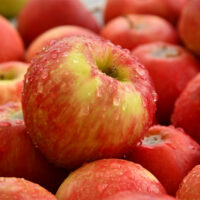6 remedies to get relief from sinus congestion

Sinus congestion can have different causes, from cold or viral infections to seasonal or environmental allergies. Congestion inflames the nasal passage and leads to pain, pressure, and breathing difficulties. Usually, most people find relief from nasal congestion within a few days with proper treatment, but there are also several home remedies that have proven to relieve sinus congestion. These remedies can help ease the pain and clear out mucus, expediting recovery.
Drink hot liquids
Hot soups, teas, and broths can help relieve sinus congestion and ease breathing difficulty. The steam from these liquids can thin mucus and help in its drainage. One can have ginger tea and add lemon and turmeric to it; this remedy can even soothe sore throats, which are often a result of postnasal drip. Green tea is another good option since it is rich in antioxidants and essential nutrients that can help soothe swelling.
Eat anti-inflammatory foods
Many foods rich in anti-inflammatory properties can help ease sinus congestion. Here are some of them:
- Pumpkin seeds contain omega-3 fatty acids and magnesium, which can reduce swelling and relax nasal blood vessels.
- Vitamin C-rich fruits like pineapple contain bromelain enzymes, which can break down mucus protein and help reduce its production. On the other hand, grapefruit contains salicylic acid and anti-inflammatory properties that can help reduce swelling.
- Flavonoid-rich onions can fight allergies and reduce inflammation.
Use humidifier
A humidifier adds moisture to the air. When inhaled, it helps moisten and thin the mucus, reduces inflammation, and provides relief from sinus congestion.
Take a hot shower
A hot shower is another quick remedy that can help reduce sinus pain, promote mucus drainage due to steam inhalation, make breathing easier, and ease body ache, which is often associated with viral fever that causes nasal congestion.
Try warm compressor
This is another quick and easy remedy to get relief from sinus congestion. A warm compressor is a heated cloth or pad that is placed on one’s nose or forehead. It can help relieve sinus pressure and pain, ease inflammation, and bring overall relief from congestion and discomfort. One can either get a compressor product that can be reheated whenever necessary or soak a washcloth in hot water, wring it out, and place it on the red or swollen areas.
Take enough rest
Rest is one of the most important factors that can give the body the necessary time and energy to recoup. Before sleeping, put a pillow or two under the head and keep a vaporizer or humidifier near the bed so the sinus congestion doesn’t worsen by morning.





